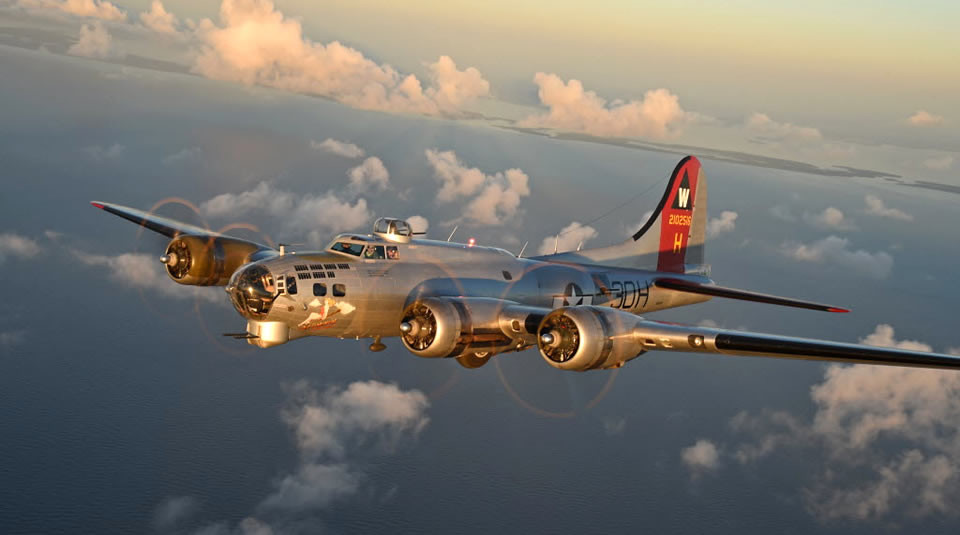History of the B-17 Aluminum Overcast

In anticipation of the B-17’s soon arrival to ITH, we thought we’d provide you with a little history behind the spectacular WWII aircraft!
World War I alerted several world powers, including the United States of America, to the effectiveness of strategic bombing missions via aircraft. The United States Army Air corps proposed a competition amongst aircraft producers to create a new multi-engine bomber with specifications and capabilities that would supersede their current aircraft. The prerequisites were as follows: the bomber had to be able to fly a minimum of 10,000 feet above the ground at speeds of 200 mph, with a range of 2,000 miles. This meant that the aircraft would need to remain airborne for at least 10 hours without refueling, which no U.S. aircraft had the capability of doing at the time.
The Martin Company and the Douglas Company entered the Air Corps’ competition as frontrunners, but a much smaller Boeing Company, actively facing bankruptcy, decided to risk everything by utilizing their best researchers, designers and engineers in an effort to acquire the government contract. Boeing filed its proposal on August 8th, 1934 and the first Boeing was produced a mere 11 months later: a turnaround rate unheard of to this day.
The B-17 stood out amongst the competition with 4 engines, 1 ton of explosive carrying capacity, and machine turret weaponry. Richard Williams of the Seattle Times dubbed the aircraft The Flying Fortress. Unfortunately, the prototype B-17 crashed on a test flight, causing it to be disqualified from the competition. Although the plane was disqualified, the Air Corps officers who witnessed the Flying Fortress refused to give up on the design. Boeing was offered a limited contract to produce 13 more B-17s which sustained the company and prevented bankruptcy.
Notably, as a result of the prototype crash, the B-17 inspired the “check-list” system used by pilots to ensure safety flight operations.
By March 1st, 1937 B-17s were being delivered to the 2nd Bombardment Group in Langley Field Virginia where they rapidly became the most popular aircraft amongst pilots in the Air Corps. Many variants of the B-17 were modified and produced before and during the United State’s integration into the Allied World War II effort.
75 years after the first B-17 flight, an elderly war veteran wrote a letter to The Boeing Company thanking them for making such quality planes. The veteran was flying back to base after a raid over Germany with a B-17 that sustained 179 flak holes and 2 destroyed engines. Though most B-17s were scrapped after the war, a dozen are still flying on aerial tours and in airshows.
One of the flyers “Aluminum Overcast”, operated by the Experimental Aircraft Association, is scheduled to arrive at the Ithaca-Tompkins Regional Airport on Wednesday, September 11th. Through the weekend, Aluminum Overcast will be offering paid tours and flights for the public.
All proceeds will be used to keep this historic aircraft flying, in remembrance of the men and women who served valiantly during WWII.
View more posts

